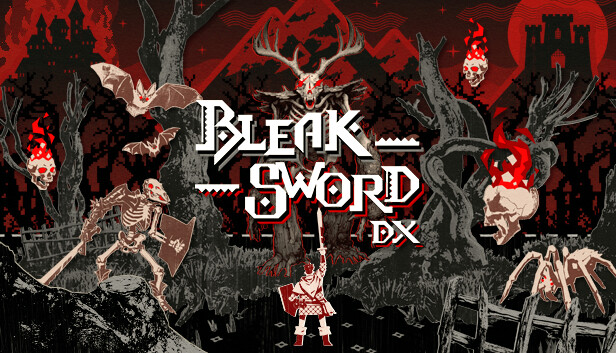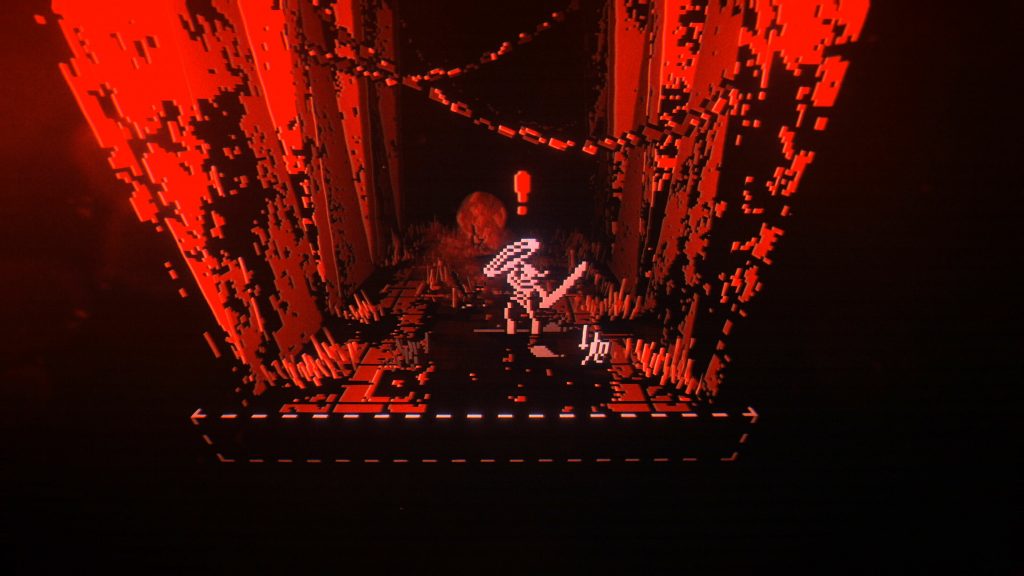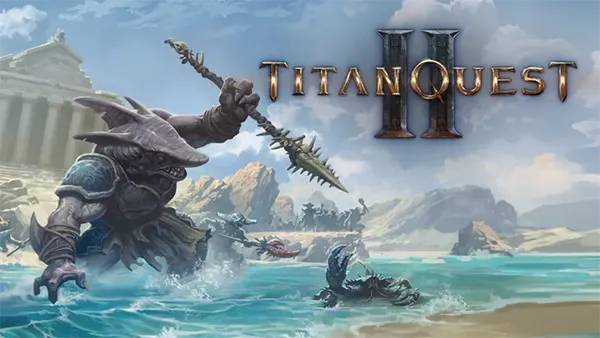
Bleak Sword DX Review: A Lo-Fi Version of Elden Ring
The makers of Bleak Sword DX have labeled the game as a lo-fi counterpart of Elden Ring. Just like Elden Ring, Bleak Sword DX also presents a harsh, dark fantasy, only with a more simplistic graphic style compared to the lavish project from FromSoftware. The main character is a small handful of white pixels armed with an equally pixelated sword, and the adversaries aren’t much more detailed. Despite the minimalist visuals, the game manages to entertain, presenting a riveting action experience that poses a fair level of challenge, thanks to its solid gameplay mechanics.
Storyline
The plot is as schematic as the graphics: The king is murdered by his younger son, whose mind is clouded by a sword known as the Bleak Sword. Following this event, all kinds of evil creatures, including those summoned by dark magicians, overrun the land. This chaos continues for over 200 years as the Bleak King occupies the throne. Suddenly, rumors spread about magical stones capable of ending the tyranny, and the protagonist has a prophetic dream revealing the locations of these stones and the Bleak King.
Beyond this, the story doesn’t really evolve. The protagonist travels through various regions, from snowy mountains to forests and swamps, meeting powerful opponents at the end of each chapter. The interactions between them are limited, they fight, and the story moves on. It’s a bit disappointing that the narrative has been given so little attention. You can skip the cutscenes involving bosses without missing anything, and the bestiary descriptions offer little interest.
Gameplay
The emphasis in Bleak Sword DX is clearly on gameplay. Each chapter consists of roughly a dozen levels and involves tiny arenas where you must defeat all enemies. They appear one after another, always in the same places – if you die and restart a level, nothing changes.
The main character can perform regular sword attacks and charge them for more damage. The catch is that each swing drains stamina, and after the fourth hit, the protagonist needs a brief pause. You can either run circles around the arena or roll to dodge enemy attacks and projectiles, as these actions do not consume energy.
Characters
The key skill in the hero’s arsenal is parrying. Timely blocking can deflect weaker enemy attacks, leaving the opponent momentarily vulnerable. Parrying is accompanied by a vibrant special effect and corresponding sound, making it satisfying to execute – it’s a unique reward for properly utilizing game mechanics. In addition, parrying instantly restores stamina, allowing you to attack one enemy, parry another’s attack, and immediately continue the battle.

Mechanics
Though the mechanics of Bleak Sword DX may seem well-worn, they’re implemented superbly, with no instances of bugs or awkward controls disrupting the gameplay. The variety of enemies ensures that you will encounter new creatures with unique moves several times within a chapter. Some enemies can only be damaged when they fall to the ground, while others try to knock the hero off his feet. Spiders spew webs, tentacles emerge from water at various points, and peculiar aggressive sunflowers shoot at you. Some attacks cannot be blocked – in such cases, a red exclamation point appears over the opponent’s head, and rolling away is your only escape.
The enemy types are constantly rotating – it’s not the case that you only meet a certain type in the early chapters and never see them again. As such, each level remains interesting as you never know whether you’ll be facing gigantic knights with colossal swords or local buffalos running from corner to corner. The AI is pretty solid – spiders attempt to maintain distance and lure you in for a sudden attack, while bosses react to your proximity, employing different tactics based on distance.
Monotony does set in at some point, but it’s more due to the large number of levels than the gameplay itself. From each chapter, two or three episodes could easily be cut. Sometimes, you finish a mid-chapter level expecting something challenging, only to take no damage as the enemies are lackluster and the location barely differs from the previous one.
Strength Lies in Caution
You’re likely to die frequently in Bleak Sword DX, as the character can only withstand a limited number of hits. Character progression aids in fortification – by successfully completing challenges, you earn experience, and upon reaching a new level, you can choose to upgrade health, attack power, or defense. While the first two stats are self-explanatory, the fundamental difference between health and defense remains somewhat ambiguous. Defense might refer to the parrying window – the more I upgraded this attribute, the easier it was to parry attacks.
Level completion can also yield items affecting your stats, but inventory space is limited to just two slots. You must choose between items like a defense-boosting necklace or a one-use health kit. If the hero dies, he loses all experience above his current level and all his inventory. It’s possible to retrieve these, but you only get one chance – you have to complete the same level without dying. Though this might seem harsh, the loss of items and experience doesn’t cause significant distress.
Nonetheless, you’ll strive to pass challenges and die less frequently, partly because the combat system is rewarding and encourages proper use of mechanics. The game isn’t overly difficult – it’s more balanced: not easy, but not backbreaking either. By being attentive, remembering enemy abilities, and avoiding reckless attacks, all levels can be completed within a few attempts.
Bleak Sword DX is an updated version of the game from the Apple Arcade subscription, offering more content than the original. It includes a few bonus chapters and an interesting level randomizer, where levels are shuffled around. Additionally, it features a boss-rush mode, where you face the strongest opponents from each chapter. These amusing distractions (accessible after completing the storyline) add value, though the five-hour campaign was sufficient for me.
While the developers humorously compare the project to Elden Ring, it reminds me more of The Binding of Isaac – both featuring brief arena battles against small groups of enemies. However, whereas The Binding of Isaac focuses on collecting power-ups for Isaac, Bleak Sword DX’s gameplay centers around melee combat against various foes, whose attacks can, for the most part, be parried. The result is a solid action game fit for one or two evenings – nothing groundbreaking, but worth recommending.


